
Moles
Learn about common types of moles, warning signs, causes and prevention
DERMATOLOGY | SKIN CANCER | MELANOMA | MOLES | ANTI-AGING | ACNE | ACNE MEDICATIONS | ACCUTANE |
HAIR LOSS | HAIR LOSS MEDICATIONS | TRETINOIN | PSORIASIS | HYPERPIGMENTATION | SKIN CONDITIONS
What are Moles on the Skin?
Moles (often known as melanocytic nevi by doctors) are a common benign type of skin lesions, usually of brown and tan tones.
Almost all of us have several skin lesions including moles and will develop further ones over time.
In medical terms, a normal mole (melanocytic nevus) is a benign mole. This means it carries no harm and is not cancerous in any way. The vast majority of moles are benign, healthy moles.
A mole that is dark in color is called a pigmented naevus. The more pigmented a naevus is, the more likely a patient is to present with it for review.
Types of Moles
There are several ways to classify melanocytic naevi (moles). One common way is by the timing at which the mole appears.
- Congenital melanocytic nevi are lesions present from in and around birth. They are often considered to be birthmarks. Types of Congenital melanocytic naevi:
- Compound nevus
- Junctional nevus
- Intradermal nevus
- Combined nevus
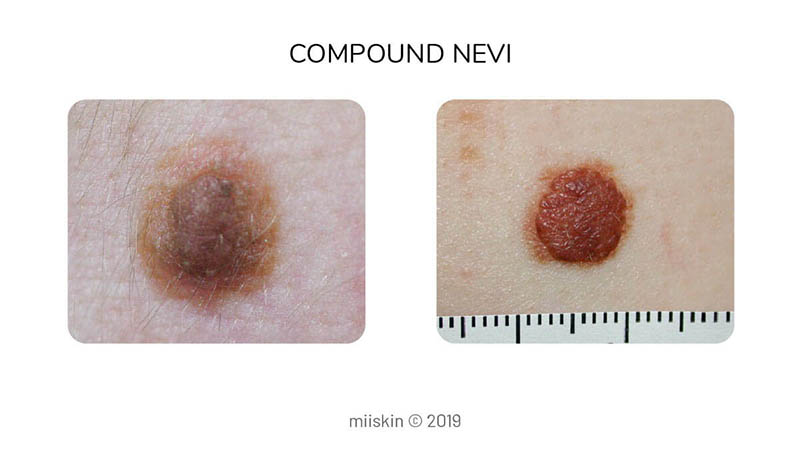

2. Acquired melanocytic nevi are moles that appear after birth:
- red and white moles
- blue moles (these tend to be a uniform blue steel color)
- pink moles (these are typically seen in fairer skin individuals and quite a uniform pink color)
- dark and black moles (these are typically a uniform dark black mole)
- skin/flesh-colored mole (these moles are the closest to the natural skin color)
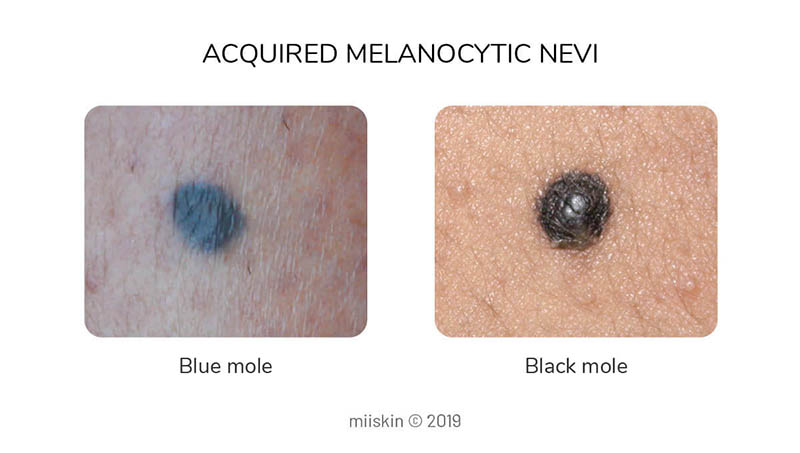
The list of moles above is not comprehensive. There is another type of moles, atypical moles which are more uncommon.
3. Atypical moles – An atypical mole is a term used to describe a harmless, benign mole with irregular or abnormal appearance.
What Causes Moles?
The number of moles an individual has will develop over time depending on genetic factors, sun exposure, and the immune system.1
Moles can appear on any part of the body. They are known by many different colloquialisms but the medical term is a melanocytic naevus.
Patients most commonly present with a mole on their face or a mole on the body as these are easy to see. Patients finding a mole on the stomach or on the leg present less commonly as these are not as noticeable. A mole on the back may often be found by a partner whereas a mole on the scalp is sometimes found by hairdressers or barbers.
Pictures of Moles
In this section, we will illustrate the common types of mole found on the body. Patients often wonder what do normal moles look like and using multiple pictures of moles, we hope to raise awareness of the appearance of normal moles and the variations that can occur.
Moles can be a large range of colors ranging from light skin color to dark black. The following section contains mole images and skin mole pictures for the most common moles.
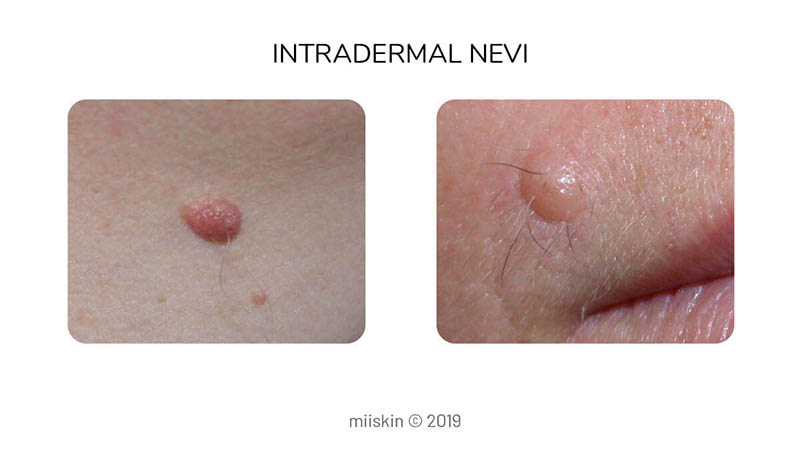
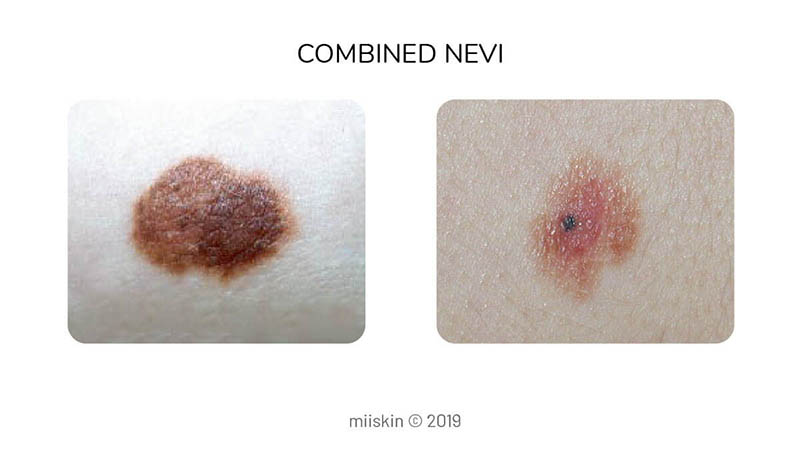
Signs & Symptoms: Changes in Moles to Look Out for
Once a mole has appeared, it is very difficult to predict how it might change over time. With the majority of moles, very little change will occur and the appearance will remain largely unaltered.
It is vital to know which skin moles to worry about and there are many different types of changes.
The most important type of skin lesion to watch out for is melanoma. This can be aggressive skin cancer and can be fatal in advanced cases. It is vital therefore to know about melanoma signs and also to be aware of skin cancer symptoms such as pain or itching.
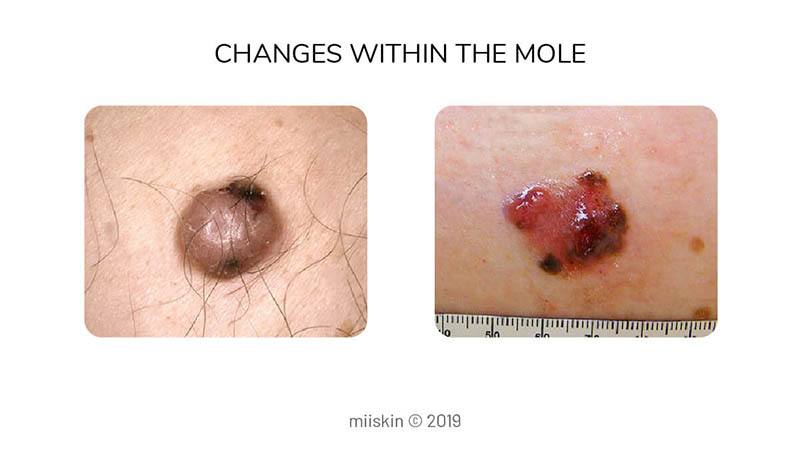
Important warning signs related to moles:
1. Moles that get larger or darker
A subset of moles will get larger or universally darker and these are important signs to watch out for. Much of the time, these changes will not be of concern but for safety and reassurance, they are worth getting checked.
2. Moles that get crusty, painful, become itchy or bleed
A mole that becomes crusty or bleeds should be reviewed as the visual changes can be markers of underlying changes within the mole. Moles are rarely painful but can often become itchy. Both can be skin cancer symptoms and reasons for review.
3. Moles that change the shape or a part of the mole changes in color
Changes to take extra care with include a change in the shape of a mole or a change in color of part of the mole. These warrant review by a doctor. Again they are often harmless changes, but they do carry higher risk and must be checked.
A great way of remembering how to check a mole visually is the ABCDE rule. This helps us look for melanoma signs and assess melanoma vs non-cancerous moles.
Prevention: the Importance of Checking and monitoring your Moles
Rates of skin cancer are rising across the world. Although treatments are advancing, late diagnosis continues to carry a poor prognosis. Early detection of skin cancers is therefore as vital as ever.
Any mole changes such as an increase in size or a change of color can be seen as a risk of potential skin cancer and should prompt a visit to the doctor. Many of us will have multiple moles on various parts of our bodies and some people have a strong tendency to develop large numbers of moles or other skin changes.
Ongoing monitoring of all moles is important, especially in sun-exposed areas. A full skin check including skin mapping should be done at regular intervals looking for any new lesions or changes.
Removal of every normal mole on every individual is not practical or appropriate and good awareness of the alarm signs and frequent review form the mainstay of management.
Consult a Board-Certified Dermatologist Now!

Download the Miiskin app to connect with independent, board-certified dermatologists who are licensed in your state. Answer a few questions, upload some photos and get a treatment plan in 1-2 days. Consultation price is $59 and medication renewals are only $39.
Online dermatology care is ideal for chronic dermatology conditions.

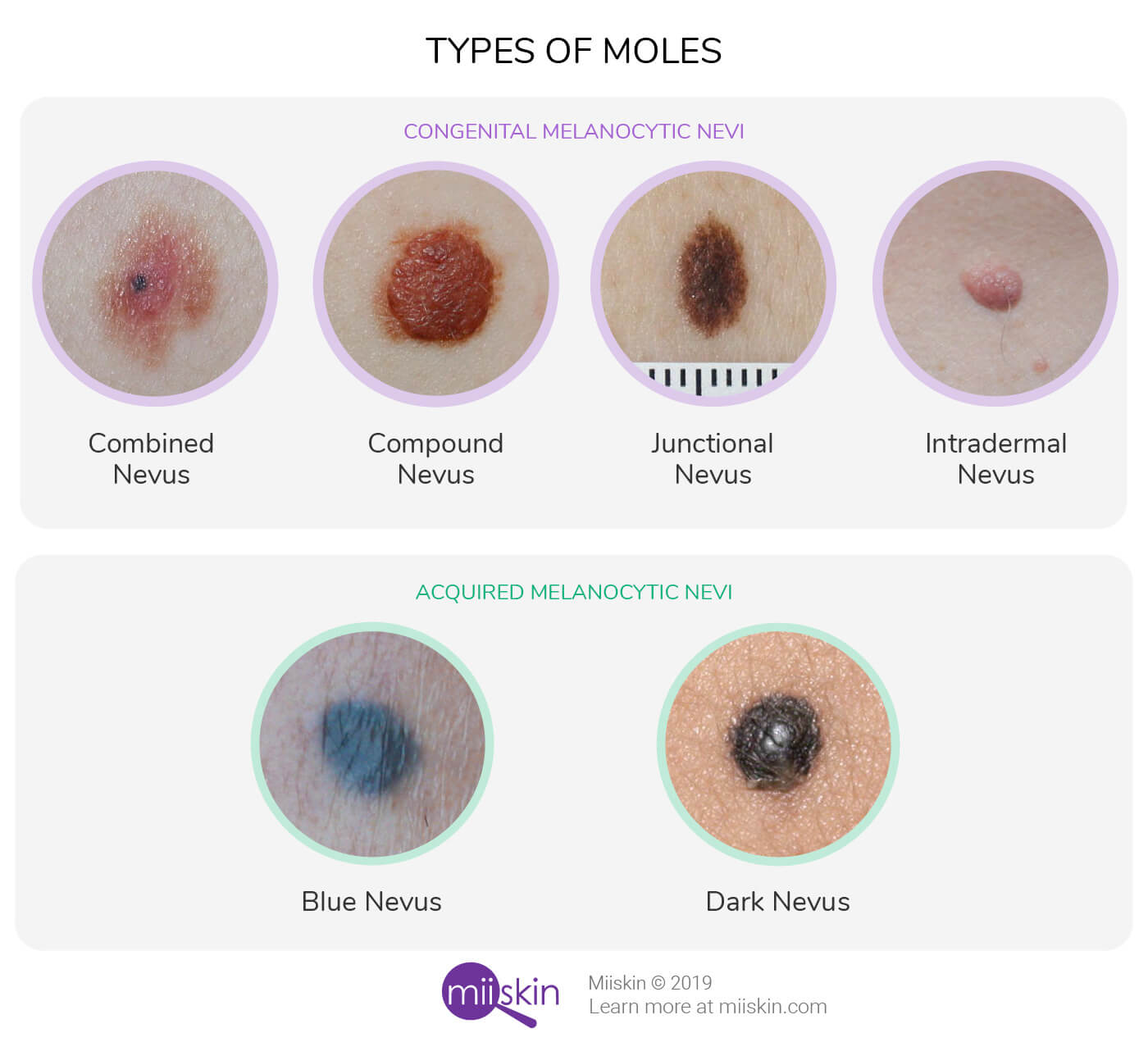
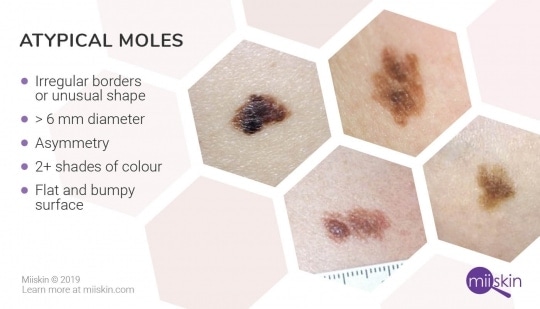
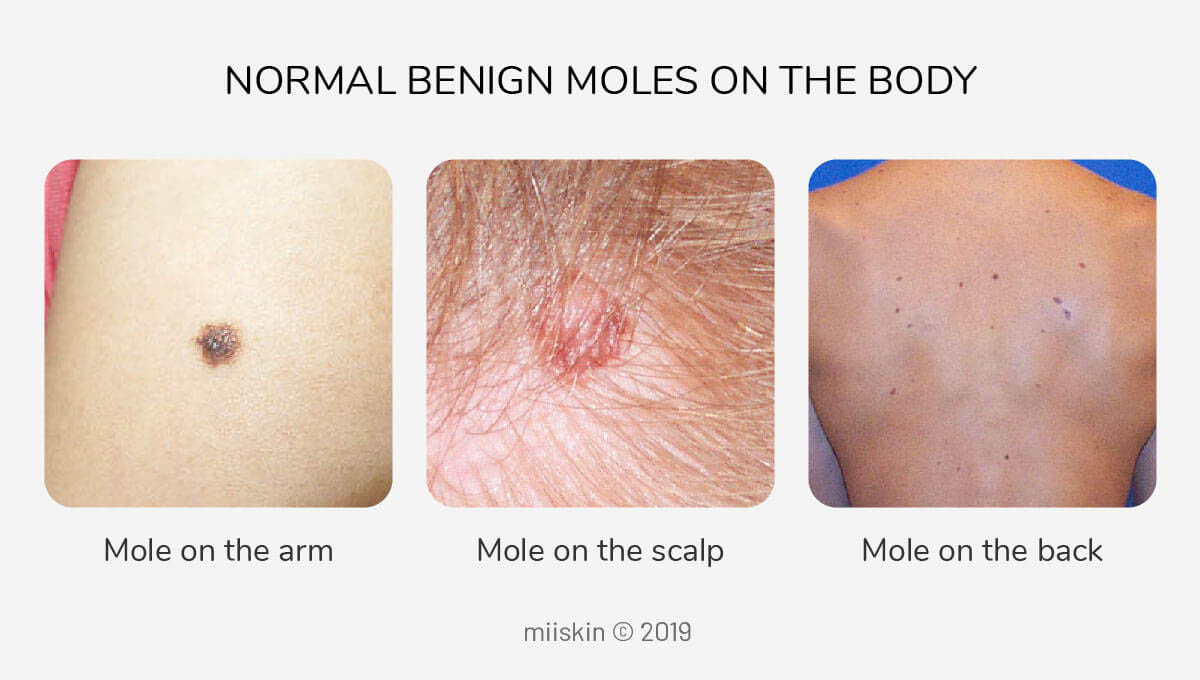
 Interested in having a virtual consultation?
Interested in having a virtual consultation?